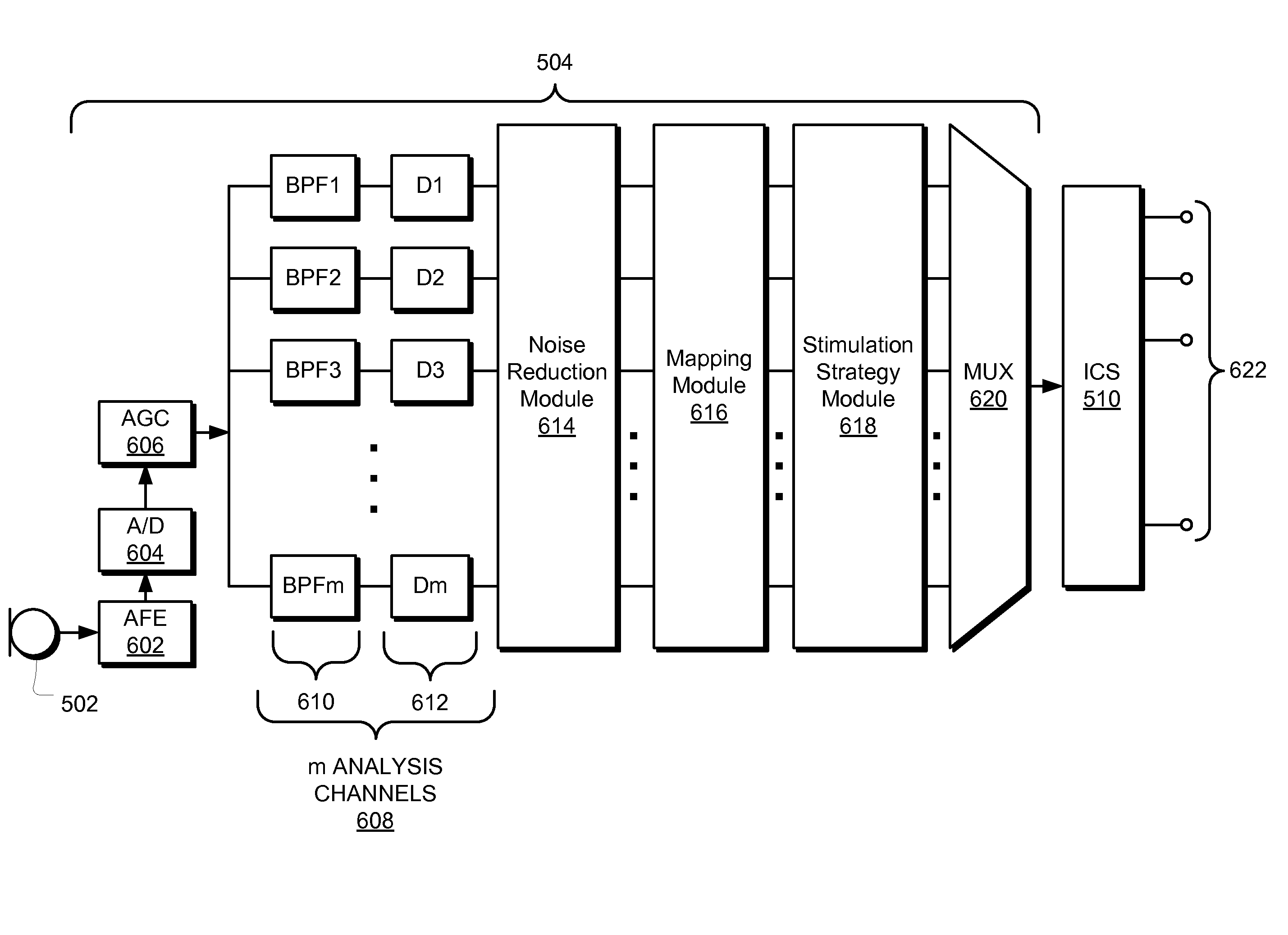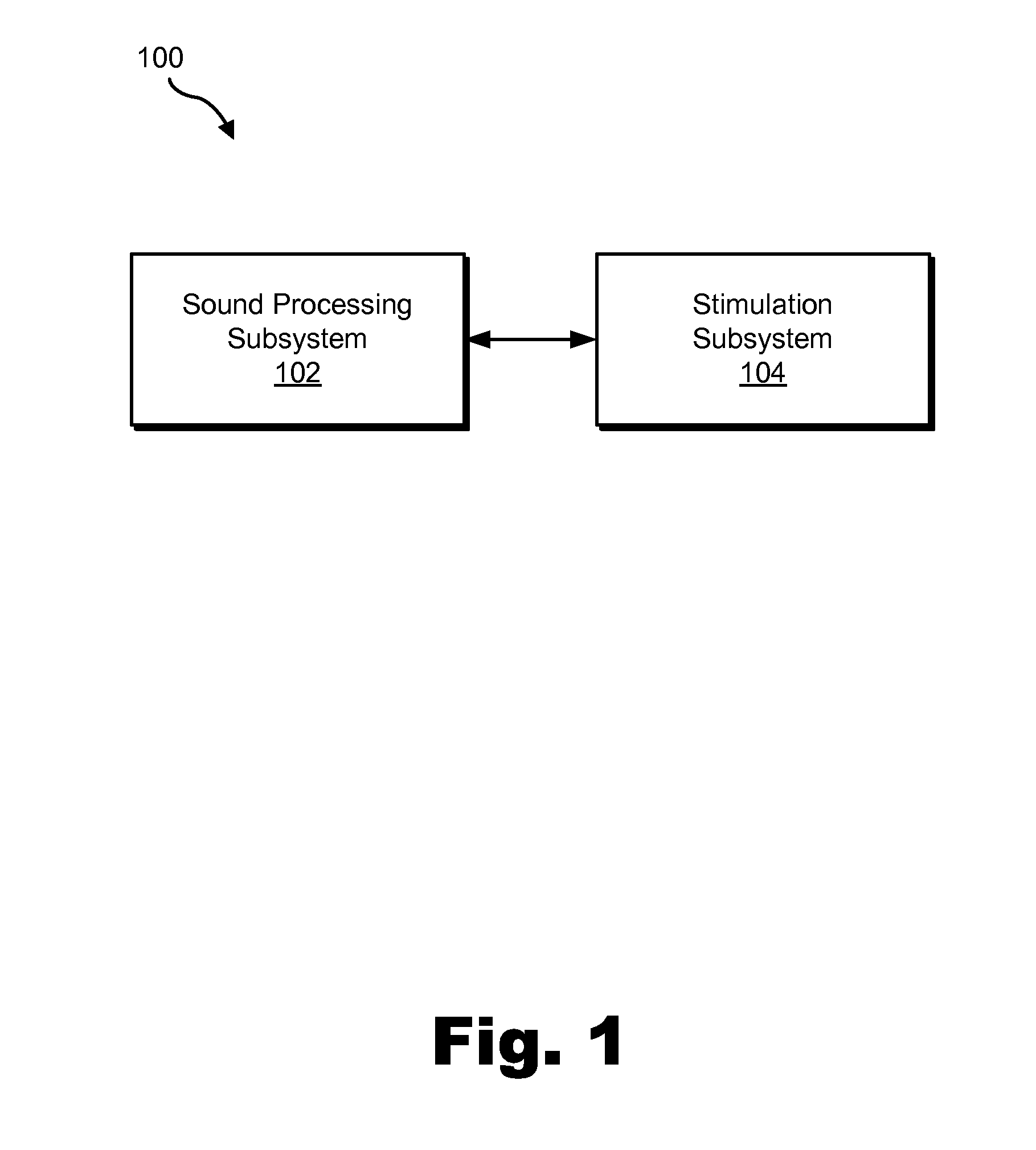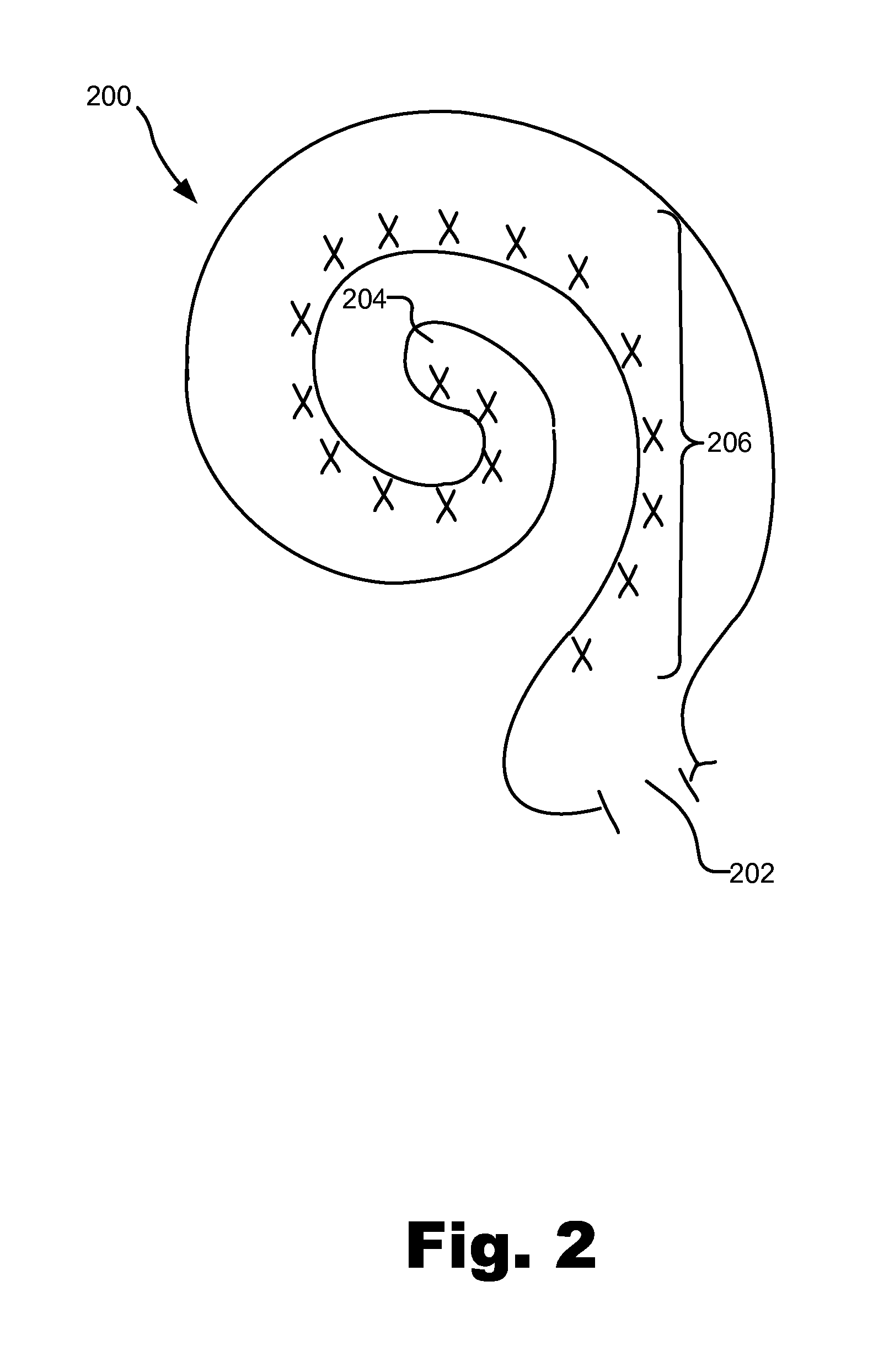Methods and systems for representing different spectral components of an audio signal presented to a cochlear implant patient
audio signal technology, applied in the field of different spectral components of an audio signal presented to a cochlear implant patient, can solve the problems of conductive hearing loss, impeded normal mechanical pathways for sound to reach the hair cells in the cochlea, and impeded sound pathways
- Summary
- Abstract
- Description
- Claims
- Application Information
AI Technical Summary
Benefits of technology
Problems solved by technology
Method used
Image
Examples
Embodiment Construction
[0021]Methods and systems for representing different spectral components of an audio signal presented to a cochlear implant patient are described herein. In some examples, one or more spectral peaks of an audio signal presented to a cochlear implant patient are identified. Electrical stimulation representative of the one or more spectral peaks is applied to at least one stimulation site within the cochlear implant patient using a partial multipolar stimulation configuration. Electrical stimulation representative of one or more other spectral components of the audio signal to at least one other stimulation site within the cochlear implant patient using a monopolar stimulation configuration.
[0022]As used herein, a “spectral peak” refers to a spectral component within an audio signal that represents a distinguishing or meaningful component of the audio signal. A spectral peak may have an amplitude that is relatively greater than surrounding frequency components.
[0023]As used herein, a ...
PUM
 Login to View More
Login to View More Abstract
Description
Claims
Application Information
 Login to View More
Login to View More - R&D
- Intellectual Property
- Life Sciences
- Materials
- Tech Scout
- Unparalleled Data Quality
- Higher Quality Content
- 60% Fewer Hallucinations
Browse by: Latest US Patents, China's latest patents, Technical Efficacy Thesaurus, Application Domain, Technology Topic, Popular Technical Reports.
© 2025 PatSnap. All rights reserved.Legal|Privacy policy|Modern Slavery Act Transparency Statement|Sitemap|About US| Contact US: help@patsnap.com



